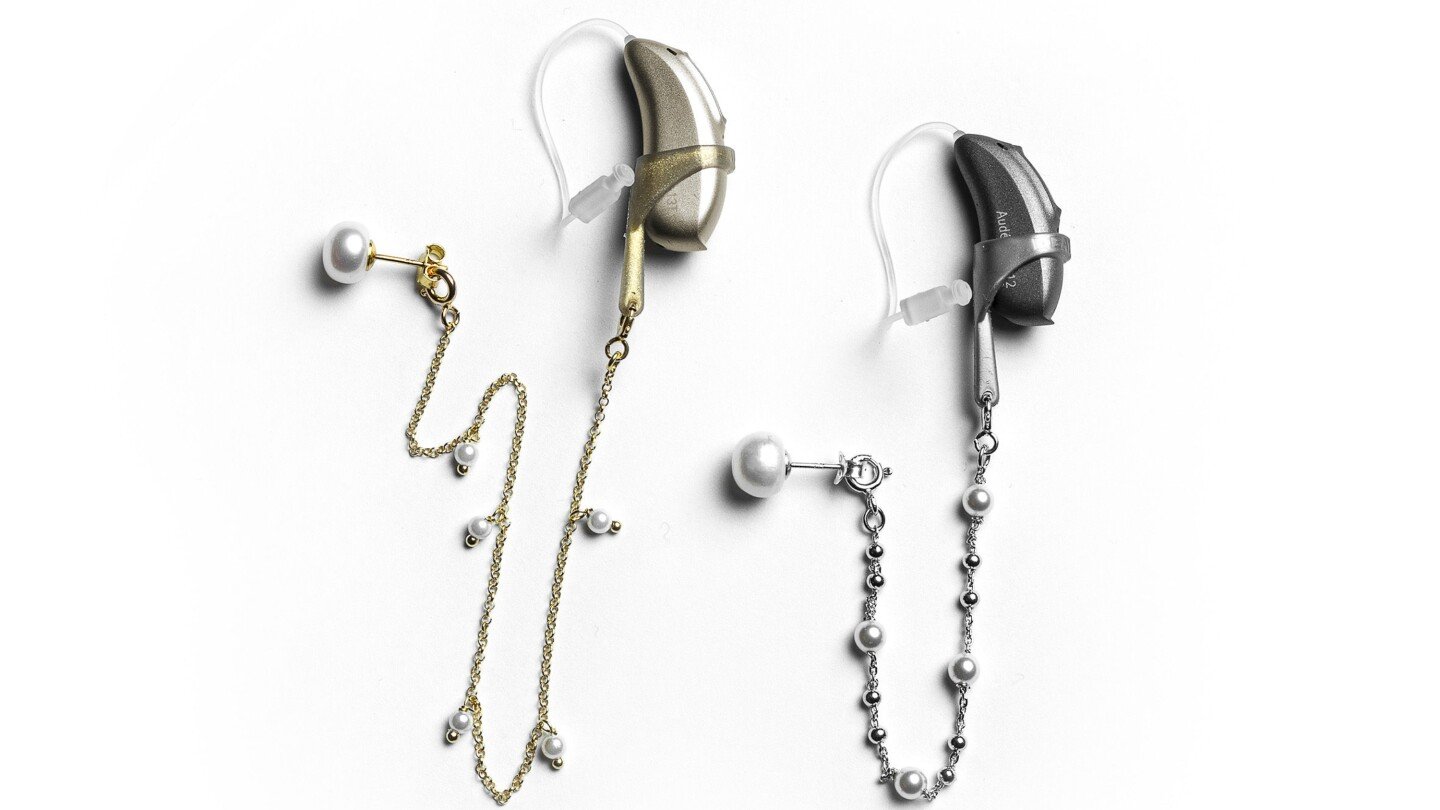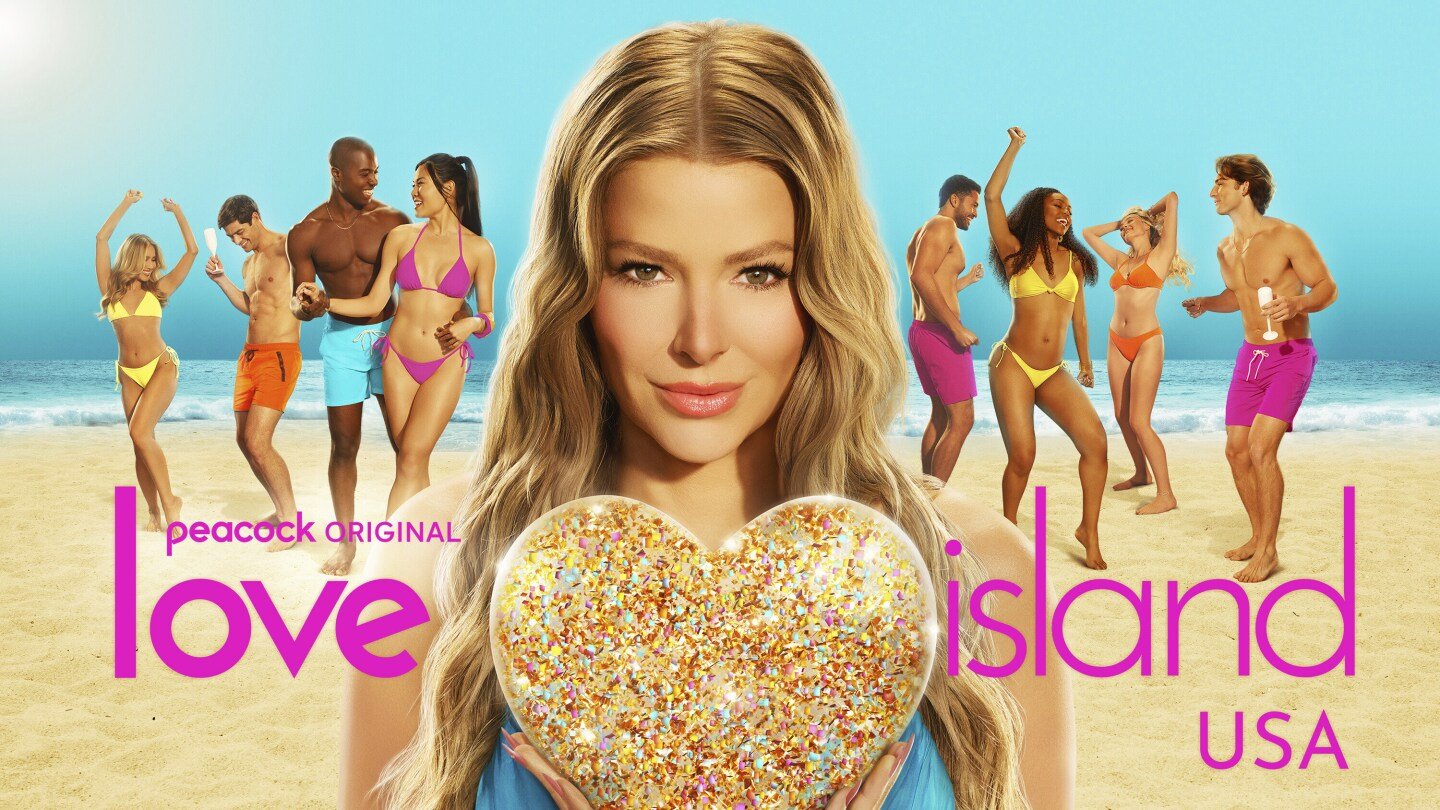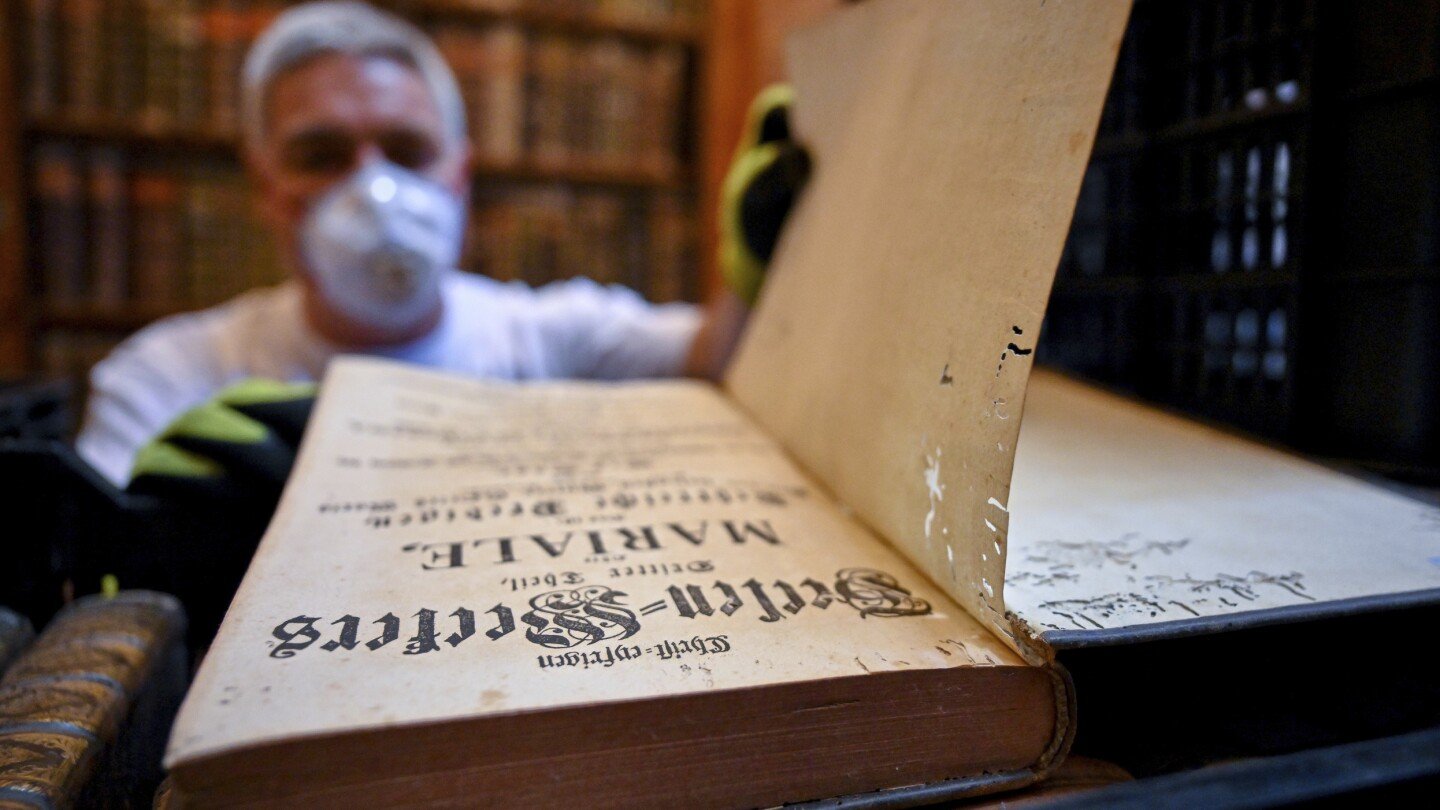Lifestyle
How to get a first hearing aid that you’ll like and can afford

NEW YORK (AP) — My first tip-off were the little things, the high-pitched little things: the doorbell and ringtones my kids could hear but I could not.
Then it was the garbled-sounding conversations, and the accompanying annoyance of having to ask people to repeat themselves. Or worse, giving up and just playing along without being able to follow everything that was being said.
Even then, I stalled for years before finally going through the process of getting a hearing aid. How do you even begin? Will it look clunky and make me feel like a dinosaur? And the cost!
Getting a hearing test, and confirmation that I needed a hearing aid, was just the beginning.
Finding an expert
The doctor handed me a list of places I could go to get fitted. I made some calls and narrowed it down to the places that took my insurance and my zero-interest health care credit card.
The first couple places were demoralizing: I walked in, was told it’d be $7,000 for the “best” option (they mysteriously didn’t happen to have any other options handy), then marched right back out the door, utterly discouraged.
I started asking friends and neighbors whether they wore a hearing aid, or knew anyone at all with a hearing aid, and could point me to a good audiologist.
It took a lot of poking around, but I found one — and it made all the difference.
This article is part of AP’s Be Well coverage, focusing on wellness, fitness, diet and mental health. Read more Be Well.
The joy of reconnecting with the world
I’ve been wearing my hearing aids for several months now, and they are as easy as slipping on a pair of glasses, are almost invisible, have reconnected me with the world, and, as crazy as this may sound, they bring me joy.
After talking with a few audiologists around the country, it turns out that my experience is pretty typical.
“There are a lot of people who stall before getting one,” says Meagan P. Bachmann, director of audiology at Atrium Health Wake Forest Baptist, in North Carolina.
“Hearing is important because it connects us with people,” she says. “Multiple studies show that not hearing can affect your ability to connect with others and participate in life, so you have to think of it in terms of overall health. Maybe you no longer go to family events, or you don’t understand your doctor. People start to withdraw. A lot of people come in because it’s gotten so bad that it is impacting their relationships.”
Steps to take
To speed up the process and make it less frustrating, here’s what the pros recommend:
1. Get tested, take the results seriously, and know that many if not most hearing aids these days are small, nearly invisible, rechargeable, and pretty easy to wear and maintain. And believe it or not, hearing aids can be fun — these days, there are colors to choose from and ways to bejewel them. One company, Deafmetal, makes jazzy-looking “safety rings” to help keep hearing aids in place.
2. Shop for an expert audiologist. Look for someone who takes your insurance or any sort of medical credit card you might have, or has a payment plan of some kind, if needed. This is a world at the awkward juncture of consumerism and medical care, but a good audiologist should come across as a medical provider, not a salesperson. And a good audiologist should take the time to work with you to find a hearing aid that meets your individual needs, and also fits your budget.
A good place to start is often with your doctor; with the American Academy of Audiologists, which lists providers on its website; or by word of mouth.
“Although all hearing aids are amplifiers, not everybody needs the same thing,” says Bachmann. “Fitting a hearing aid is an art. It changes the acoustics, and everyone is different. You want someone who listens to your lifestyle needs. Do you have a lot of difficulty with noise? Are you mostly in quiet situations? How much technology do you need, and what kind?”
Greta Stamper, an audiologist at the Mayo Clinic in Jacksonville, Florida, agrees. “Hearing loss is not a one-time thing. It’s a chronic health condition. It should be a partnership between you and your audiologist,” she said. “It’s someone asking you what you’re looking for and how it’s going. You shouldn’t feel pressured or pushed.”
3. A note on cost. Although hearing aids can be pricey, there are affordable options, and a good audiologist should be able to let you try out options at several price points. Insurance often covers much of the cost, and there are ways to pay for the remaining cost in installments. Also, avoidance has pretty high costs as well, audiologists say, and the longer the wait, the harder it may be to solve the problem with a hearing aid. Although there are cheaper hearing aids at big box stores, Bachmann warns that it’s good to check with your audiologist before taking that route. “Some of those hearing aids are locked, so that you’re not allowed to have them programmed by an outside audiologist,” she says.
Remember, says Stamper, that hearing aids are an investment, and usually last between five and six years.
4. Know your rights. “We select what is the most likely to be successful, and if it doesn’t work out you come back and do something else,” says Stamper. She said most states mandate a trial period. In some cases, hearing-aid companies also cover the cost of multiple visits to your audiologist while you are getting used to your new hearing aid and get training in how to use and maintain it.
5. Embrace the process, and expect it to take a little time and a few expert tweaks. Audiologists say your brain needs time to adjust to a hearing aid, and that hearing-aid settings should be adjusted little by little as your brain adapts to them.
“A big misconception is that you can just wear them a couple hours a day. Your brain does better with it if you use them most of the day. Your brain needs to adapt to hearing sounds it hasn’t heard for a while, and it takes the brain awhile to relearn how to process all those sounds,” says Stamper.
6. Be realistic. “Although hearing aids can be enormously beneficial, they may not give you back your normal hearing,” says Stamper. Depending on the situation, there might be limitations to what a hearing aid can do.
“It might just be lots of improvement in the key areas in which you’re struggling,” said Stamper.
Using hearing aids is a process, the audiologists say, and although it requires some patience, it can be well worth the journey.
___
For more AP Lifestyles stories, go to https://apnews.com/lifestyle.
Lifestyle
Most teens see college as key to jobs and life skills, AP-NORC poll says

PHOENIX (AP) — Most American teenagers say it is important to them to graduate from college, with girls especially describing it as a key step for accomplishing their life goals, according to a new poll.
Teenagers also generally are more upbeat than adults on college despite concerns about tuition costs, soaring student loan debt and the politicization of many issues in higher education.
Overall, about 6 in 10 teens say it’s “extremely” or “very” important to them to graduate from college, according to the survey from The Associated Press-NORC Center for Public Affairs Research, which was conducted this spring among teenagers between the ages of 13 and 17. That compares with about 4 in 10 adults who said the same in a UChicago Harris/AP-NORC poll from 2022.
The survey also found that many teens think it will be harder for them to achieve major life milestones — like owning a home, raising a family or reaching a good standard of living — than it was for their parents.
For Ry-n Uyeda, 17, the biggest concern about college is the prospect of being away from her home in Waianae, Hawaii. Uyeda is already taking college-level courses in high school and hopes to play softball at a university on the West Coast.
Uyeda said she wants to develop time management skills and endurance to handle the pressures of being a student-athlete. But she hopes the college experience does not change who she is.
“I want to remember where I came from and the values that I’ve learned from here,” said Uyeda, who attends Waianae High School. “Going to a new place with new people in a new environment, I just want to still be myself.”
Far more girls than boys see value in college
Seven in 10 teenage girls in the survey said it was at least “very” important to them to graduate from college, compared with 54% of teenage boys.
The disparity reflects a growing gender gap in college degree completion. In 1995, young men and women were equally likely to hold a bachelor’s degree. Since then, a gap has emerged, with 47% of U.S. women ages 25-34 completing a bachelor’s degree compared with 37% of men, according to a Pew Research Center analysis of census data.
Teens raised in households with higher incomes and parents who went to college themselves also are more likely to view higher education as important.
Jalena Crawford, a 16-year-old high school junior, said she hopes to attend Grand Canyon University or Arizona State University to become a professional American Sign Language interpreter. She said her plans have been encouraged by relatives with college degrees and it would be “weird” not to consider higher education.
“I didn’t really start thinking about college until I started liking ASL. I was trying to figure out what I was going to do,” Crawford said.
Most teens see a college education as a vital step for their future career prospects, although they see other benefits as well.
About 7 in 10 teenagers said completing college is “extremely” or “very” important for getting good jobs, and about 6 in 10 teenagers say a degree is valuable in learning necessary life skills. About half of teens see college as key for either becoming a more informed member of society or forming their personal identity, according to the survey.
Teens think life milestones will be harder for them to achieve
Teenagers have many of the same life goals as adults, such as owning a home and raising a family, the poll found. About 8 in 10 teenagers value being able to pursue what they enjoy, having a good standard of living and having a successful career.
But few teenagers believe those goals have gotten easier to achieve for their generation compared with their parents.
About 7 in 10 teenagers believe owning a home has become harder to achieve for them compared with their parents, according to the poll. Just over half of teenagers say it’s become more challenging for their generation to raise a family. About half say that about having a good standard of living, having a successful career or traveling the world. Fewer, about 4 in 10, say it’s grown harder to graduate from college or be able to pursue what they enjoy.
Evarist Bego, 22, graduated earlier this year from the University of Southern California with a joint degree in business and film. He said he recalls wanting to go to college and then work his way up in his chosen industry but “that’s just not how it works anymore.”
It’s harder than he anticipated to find a job, which he said may owe partly to the creative industry he chose. He sees mostly temporary positions, like internships or fellowships.
“So many jobs that I see are entry-level, but then they require three-plus years of experience. I have interned in school, I had some experience, but it’s not enough,” he said.
___
Sanders reported from Washington.
___
The Associated Press’ education coverage receives financial support from multiple private foundations. The AP is solely responsible for all content. Find the AP’s standards for working with philanthropies, a list of supporters and funded coverage areas at AP.org.
___
The AP-NORC poll of 1,060 teens ages 13-17 was conducted April 30-May 14, using a sample drawn from NORC’s probability-based AmeriSpeak Panel Teen Panel, which is designed to be representative of teenagers in the U.S., and interviews from opt-in online panels. The margin of sampling error for teens overall is plus or minus 4.2 percentage points.
Lifestyle
Love Island sparks debate about race and dating among Black women

It used to be that dating was as simple as deciding between dinner, a trip to the movies or an arcade. Now, understanding the dating scene has become intermingled with smartphones, matchmaking apps and one’s ability to navigate thorny social issues like racial preference in a mate.
“Love Island,” a widely popular international reality television franchise, is emblematic of the complexities of modern dating. It has also sparked heated discussions among fans about the desirability of Black women and darker-complexioned people both on and off air.
The show, which aired the finale of the seventh season of its U.S. version Sunday and is airing the 12th season of its U.K. version, casts conventionally attractive “islanders” who are generally in their early to late 20s for a six- to eight-week stay in a luxury villa. Men and women compete for long-lasting relationships and a cash prize.
But as the show’s daters face challenges meant to test their bonds, as well as elimination by villa mates or by fans’ vote, notions of who is and isn’t desirable frequently come up for viewers and contestants alike. In the end, many fans are left with the perception that racial bias, colorism and misogyny are especially inescapable for Black women on reality dating shows.
“The diversity in the U.K. one is terrible,” said Oghosa Ovienrioba, a content creator from London. “It’s very anti-Black.”
It’s not simply that Black women are picked last for coupling or eliminated first on the U.K. or U.S. versions of the show. Many fans say there’s a recurring theme of suitors dumping or ditching Black female contestants when there is a fairer skinned option. Black female contestants have also complained of not doing well on the show when they don’t lower their standards for intimacy with a suitor, as though they are lucky to even been considered dating material among more desirable mates.
Even with these viewer frustrations, Ovienrioba said she prefers “ Love Island USA.”
“I feel like the dark skin Black women on that show always find men who fit their vibe, who respect them, who are attracted to them, desire them, treat them like queens,” she said.
‘Love Island’ U.K. irks fans over treatment of Black women
In the U.K. version, fans have counted multiple instances where Black female contestants were left as the last choice when couples were picked, or they were first to get eliminated and dumped from the villa. Many have also noted that it took eleven seasons before a darker-complexioned Black woman was declared the winner.
Now in its 12th season, Love Island U.K. is still dogged by allegations of male contestants’ bias against Black women. After 23-year-old Alima Gagigo, a Black woman, chose to couple up with 26-year-old Blu Chegini, a white man, he said, “I’ll be honest, on paper, you’re not my type.”
Gagigo responded, “Of course,” as if those were words she was not surprised to hear.
There is no evidence that Chegini was referring to Gagigo’s race or ethnicity. But the exchange was enough to confirm what some in audience felt was an implicit bias against Black women in the villa.
“Love Island’s only stipulation is that applicants are over 18, single and looking for love. Our application and casting process is inclusive to all and we are always aiming to reflect the age and diversity of our audience on the show,” a show spokesperson for “Love Island U.K.” said.
Black American contestants, too, say their complexion impacts their treatment
JaNa Craig, a contestant on “Love Island USA’s” beloved sixth season, which aired last summer, landed a spot in the final four couples by the end of the competition alongside Kenny Rodriguez, who entered the villa 13 days into the season. Her bubbly personality made her a fan favorite.
Although she initially worried about how viewers felt about her, the positive audience reaction culminated in her being deemed the “baddest girl in Love Island history,” which means hot or beautiful in slang terms. Still, she felt some male contestants may not have been interested in her and Serena Page, another Black female contestant, because of their skin complexion. Page went on to win that season of “Love Island USA.”
“The very first time I felt special is when the very first guy picked me because he had three options. Other than that, I always felt like I was getting the short end of the stick,” Craig said. “Even though we know our worth and we know we’re beautiful, we still felt like — not good enough.”
Ultimately, Craig felt proudest when she heard from other Black women who said they appreciated her representation on the show, given the perception that Black women are less desirable on dating shows.
“I felt honored by the amount of Black girls that were like, ‘JaNa, you inspire me,’” she said.
“Love Island USA” producer Peacock, which on Sunday debuted a spinoff to its popular Season 6 season, titled “Love Island: Beyond the Villa,” declined comment for this story.
Desirability concerns reflect real-world anti-Black sentiments
Fans’ and contestants’ concerns about Black women’s representation on the show reflect a real-world anti-Black and misogynistic views of Black women, commonly referred to as misogynoir. Scholars describe it as both implicit and explicit contempt for Black women, much of it rooted in racist stereotypes that are perpetuated in popular culture and mass media. While Love Island contestants are not being outright racist to Black female competitors, many viewers feel the interactions Black women have had on the show have been laced with implicit bias.
Few viewers see anything wrong with “Love Island” contestants being open about the specific traits they look for in potential suitors. Tall over short, fit over average build, tattooed over unmarked.
But contestants’ racial preferences, whether real or simply perceived by fans of the show, can’t be seen as objective truth about who is or is not desirable in the world, said Alexandria Beightol, host of the podcast “Apathy Is Not An Option” at the Southern Poverty Law Center, a civil rights and legal advocacy nonprofit.
“You recognizing you have a type should also be you recognizing you are a product of a lot of mass media,” Beightol said.
The show’s producers should see the show’s popularity as an opportunity to dispel and not reinforce notions of beauty, especially ones harmful to Black women and darker-complexioned people, she added.
“It would behoove you to have some producers that look like some of the women on there who can kind of anticipate some of that drama,” Beightol said. “They do frame those women as beautiful. In the history of reality programming, they’ve busted through a lot of the implicit views that the media used to hold itself to.”
Lifestyle
Hungary’s oldest library is fighting to save 100,000 books from a beetle infestation

PANNONHALMA, Hungary (AP) — Tens of thousands of centuries-old books are being pulled from the shelves of a medieval abbey in Hungary in an effort to save them from a beetle infestation that could wipe out centuries of history.
The 1,000-year-old Pannonhalma Archabbey is a sprawling Benedictine monastery that is one of Hungary’s oldest centers of learning and a UNESCO World Heritage site.
Restoration workers are removing about 100,000 handbound books from their shelves and carefully placing them in crates, the start of a disinfection process that aims to kill the tiny beetles burrowed into them.
The drugstore beetle, also known as the bread beetle, is often found among dried foodstuffs like grains, flour and spices. But they also are attracted to the gelatin and starch-based adhesives found in books.
They have been found in a section of the library housing around a quarter of the abbey’s 400,000 volumes.
“This is an advanced insect infestation which has been detected in several parts of the library, so the entire collection is classified as infected and must be treated all at the same time,” said Zsófia Edit Hajdu, the chief restorer on the project. “We’ve never encountered such a degree of infection before.”
Abbey houses historical treasures
The beetle invasion was first detected during a routine library cleaning. Employees noticed unusual layers of dust on the shelves and then saw that holes had been burrowed into some of the book spines. Upon opening the volumes, burrow holes could be seen in the paper where the beetles chewed through.
The abbey at Pannonhalma was founded in 996, four years before the establishment of the Hungarian Kingdom. Sitting upon a tall hill in northwestern Hungary, the abbey houses the country’s oldest collection of books, as well as many of its earliest and most important written records.
For over 1,000 years, the abbey has been among the most prominent religious and cultural sites in Hungary and all of Central Europe, surviving centuries of wars and foreign incursions such as the Ottoman invasion and occupation of Hungary in the 16th century.
Ilona Ásványi, director of the Pannonhalma Archabbey library, said she is “humbled” by the historical and cultural treasures the collection holds whenever she enters.
“It is dizzying to think that there was a library here a thousand years ago, and that we are the keepers of the first book catalogue in Hungary,” she said.
Among the library’s most outstanding works are 19 codices, including a complete Bible from the 13th century. It also houses several hundred manuscripts predating the invention of the printing press in the mid-15th century and tens of thousands of books from the 16th century.
While the oldest and rarest prints and books are stored separately and have not been infected, Ásványi said any damage to the collection represents a blow to cultural, historical and religious heritage.
“When I see a book chewed up by a beetle or infected in any other way, I feel that no matter how many copies are published and how replaceable the book is, a piece of culture has been lost,” she said.
Books will spend weeks in an oxygen-free environment
To kill the beetles, the crates of books are being placed into tall, hermetically sealed plastic sacks from which all oxygen is removed. After six weeks in the pure nitrogen environment, the abbey hopes all the beetles will be destroyed.
Before being reshelved, each book will be individually inspected and vacuumed. Any book damaged by the pests will be set aside for later restoration work.
Climate change may have contributed
The abbey, which hopes to reopen the library at the beginning of next year, believes the effects of climate change played a role in spurring the beetle infestation as average temperatures rise rapidly in Hungary.
Hajdu, the chief restorer, said higher temperatures have allowed the beetles to undergo several more development cycles annually than they could in cooler weather.
“Higher temperatures are favorable for the life of insects,” she said. “So far we’ve mostly dealt with mold damage in both depositories and in open collections. But now I think more and more insect infestations will appear due to global warming.”
The library’s director said life in a Benedictine abbey is governed by a set of rules in use for nearly 15 centuries, a code that obliges them to do everything possible to save its vast collection.
“It says in the Rule of Saint Benedict that all the property of the monastery should be considered as of the same value as the sacred vessel of the altar,” Ásványi said. “I feel the responsibility of what this preservation and conservation really means.”
-

 Sports3 days ago
Sports3 days agoBill Ackman: Swift backlash after billionaire’s pro debut
-

 Europe4 days ago
Europe4 days agoBondi and Hegseth might be messing up — but they’re doing what Trump picked them to do
-

 Africa5 days ago
Africa5 days ago“Shoot in the leg”: Ruto orders Kenyan police to curb protest vandalism
-

 Asia4 days ago
Asia4 days agoSouth Korea’s former President Yoon Suk Yeol back in custody over insurrection probe
-

 Asia3 days ago
Asia3 days agoAir India crash: Engine fuel supply was cut just before Air India jet crash, preliminary report says
-

 Europe3 days ago
Europe3 days agoGerman tourist found alive 12 days after she was lost in the Australian Outback
-

 Africa5 days ago
Africa5 days agoTop European court delivers series of damning rulings against Russia
-

 Europe3 days ago
Europe3 days agoAs South Korea becomes a key arms supplier to US allies, its best customer is on the edge of a warzone




